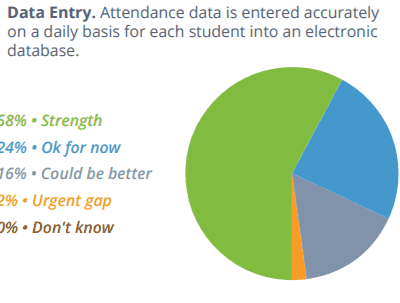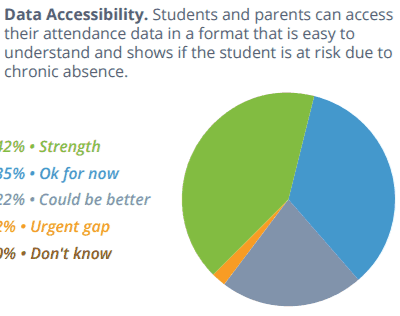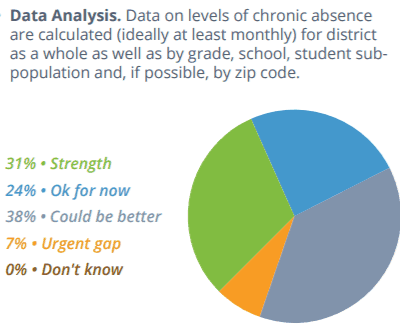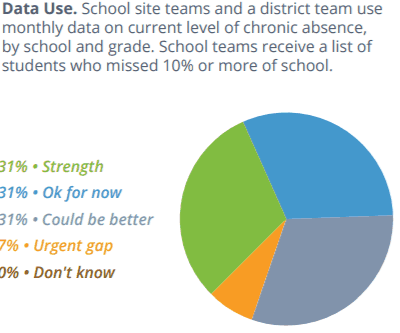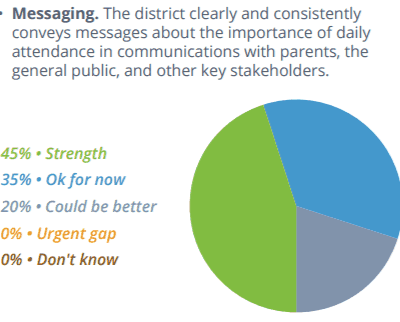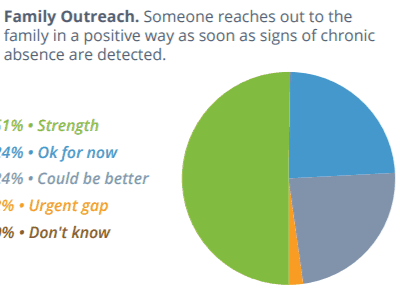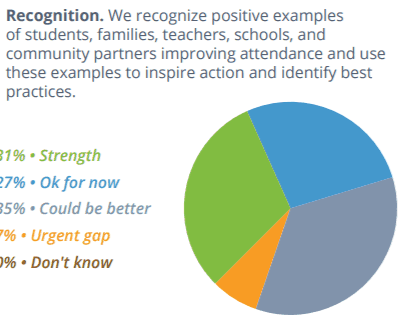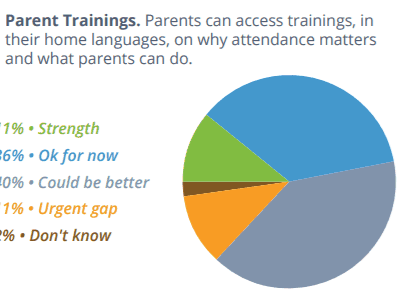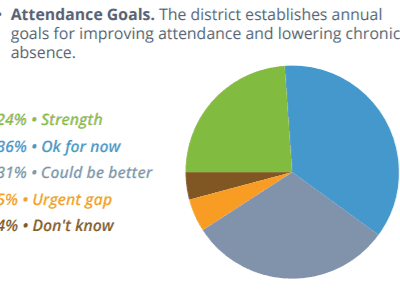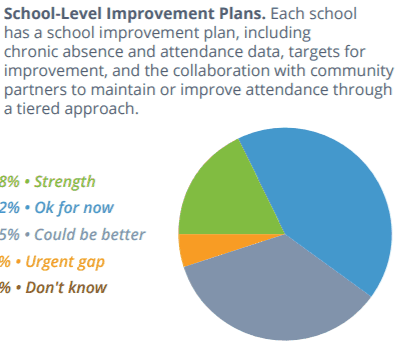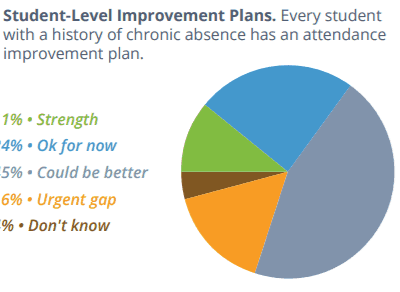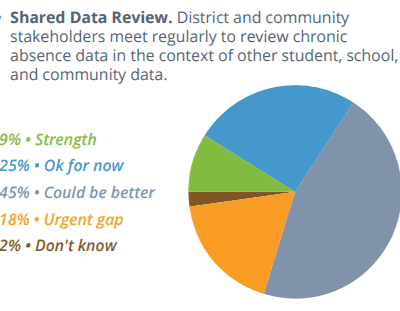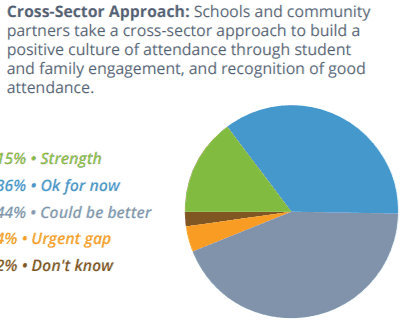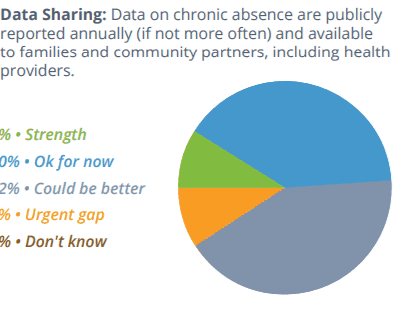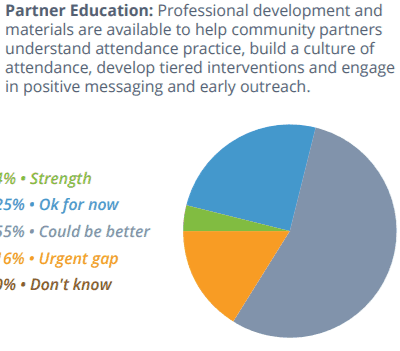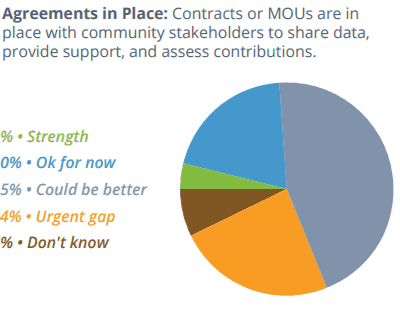Getting a child to school every day is not as simple as it sounds. Often it involves multiple people working together to ensure students are in school — parents, guardians, grandparents, siblings, bus drivers, carpool drivers, teachers, doctors, and nurses, to name a few.
In North Carolina, 14.8 percent of students miss 15 or more days of school per year, according to the latest data from the Office of Civil Rights. While some absences are out of a school district’s control, there are things districts can do to ensure students are not missing too many days of school.
The North Carolina Early Childhood Foundation released a new report this month sharing the results of a district self-assessment of their attendance policies. The report, embedded below, allows us to better understand district attendance policies and practices and shines a light on two bright spots in the state. Fifty-five of the 115 school districts responded to the survey and shared their attendance policies in four areas — actionable data, positive messaging, shared accountability, and strategic partnerships.
Actionable data
Districts are collecting data on chronic absence rates but not necessarily analyzing and using that data to inform action. Collecting data starts with entering student attendance data accurately on a daily basis. Of the 55 districts that completed the self-assessment, 58 percent reported that daily attendance data entry is a strength, 24 percent reported it is okay for now, 16 percent said it could be better, and two percent said is it an urgent gap.
The majority of the districts reported that their data accessibility — whether students and parents can access and understand attendance data — is either a strength or okay for now. In terms of analyzing and using data, however, districts reported less confidence in their practices. Seven percent of districts said data analysis, or using attendance data to calculate chronic absence rates monthly, is an urgent gap and 38 percent said it could be better. Only 31 percent of districts reported their use of absence data to be a strength and 31 percent said it could be better.
Positive messaging
The NCECF report states the importance of positive messaging around school attendance: “Interventions that treat absenteeism as a problem to be solved by addressing the barriers to attendance in partnership with families and communities are more effective than approaches that treat absenteeism as a behavior to be punished.”
Districts reported that they could improve communication and engagement with families. Half of the districts reported messaging to parents about the importance of attendance and communicating with families when students are absent to be a strength. Fewer than half reported their recognition of student attendance to be a strength, and only 11 percent reported that parent trainings on the importance of attendance is a strength.
Shared accountability
The report states, “Setting goals, making attendance a priority and building attendance metrics into accountability systems at the district, school and student levels are needed steps to realize better outcomes.” Few districts reported that setting attendance goals and creating school-level improvement plans were strengths. Instead, 31 percent said they could do better in setting attendance goals as a district, and 35 percent said they could do better creating school improvement plans that include chronic absence and attendance targets.
When asked to assess whether every student with a history of chronic absence has an attendance improvement plan, 16 percent of districts reported this as an urgent gap and 45 percent said they could do better. Finally, only nine percent reported shared data review between district and community stakeholders to be a strength while 45 percent said they could do better and 18 percent said it was an urgent gap.
Strategic partnerships
Addressing chronic absence requires collaboration between school districts, parents, teachers, and community stakeholders. NCECF says, “Attendance can improve when trusted community partners help raise awareness, address barriers, and work inside and outside the school building to impact attendance rates.”
Few districts rated their ability to form cross-sector partnerships, including sharing data with those partners, to be a strength. Even fewer reported that they had contracts in place with community partners to share data, provide support, and assess contributions. In fact, one in four districts reported an urgent gap in this area.
Read the rest of the report below to learn about two bright spots, a school and a district that have been successful in reducing their chronic absence rate.



